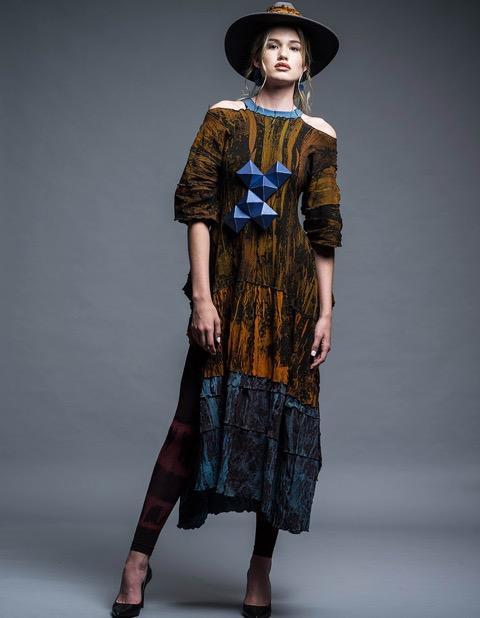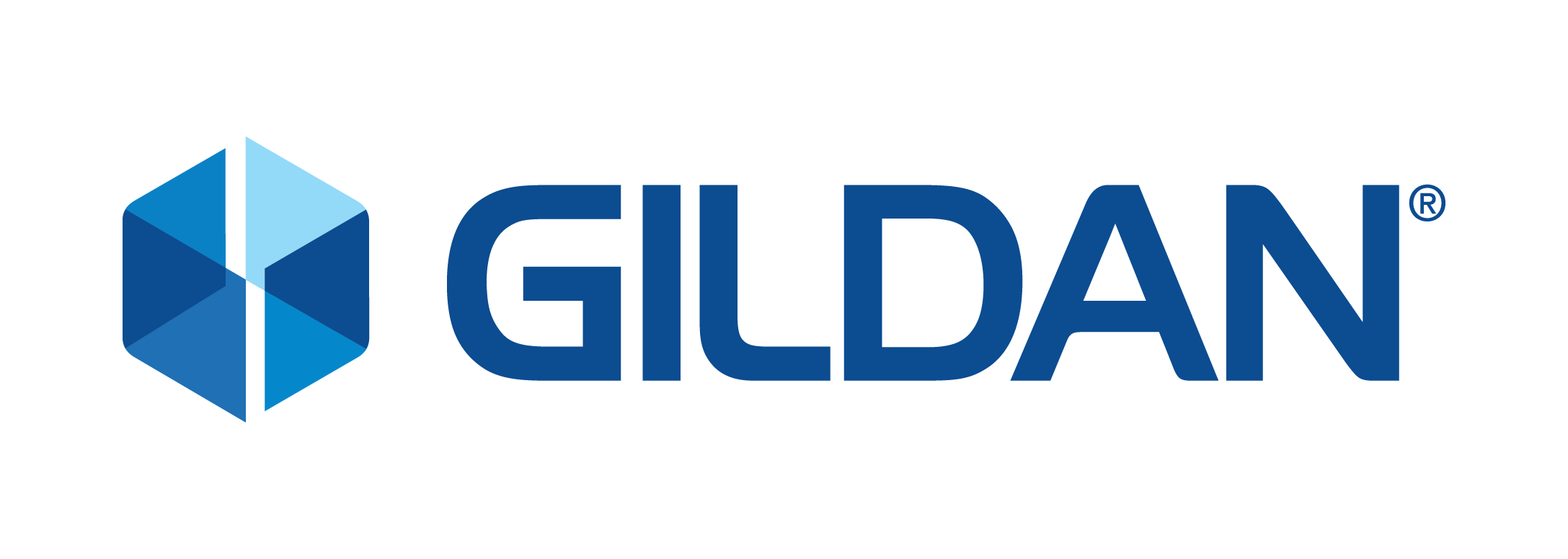The Making of a Sustainable Textile Designer: Interview With Katherine Soucie of Sans Soucie Zero-Waste Textile Design
Katherine Soucie talks about her explorations with pre-consumer apparel waste

In October 2017, Gildan partnered with Katherine Soucie of Sans Soucie, zero-waste textile design studio to give its hosiery waste new life through transformation into textiles, fashion and art. On the one-year anniversary of this partnership, Soucie talks about her research, her design and her curiosity with new inputs.
Q: How did you become passionate about recycled textiles?
I have always felt that as a designer and artist I have a responsibility to what I put out there. My passion and interest in recycling textiles started in the late 80’s when I used to visit my older sister studying at McGill University in Montreal. She would take me to all the second-hand stores that would resell seconds and deadstock. I was too young to wear the sizes that were available (adult) and so I began to alter them to fit me.
I understood from an early age that clothing was a form of expression and I loved to dress cool, which led me to find ways to do so without breaking my parents’ bank. It was from these early ventures to Montreal as a kid that I continued to scour second-hand stores — which was still not mainstream in the 90’s. Then, throughout high school I explored what is now known as upcycling. When it came to post-secondary education, there was the question of whether I would further my education into fashion and so I began transitioning my exploration of making clothing for myself into a marketable fashion line.
By the time I graduated from design school, I was told there was no market for what I was researching and wanting to do. I knew they were wrong. Up until this point, I was only focusing on post-consumer waste. It was from this moment I decided to further my studies in textiles and began to research pre-consumer waste streams and the valuable role they serve as a material resource in design, art and craft. Eventually, I found myself focusing on hosiery.
Q: Do you have easy tips you want to share with people on how we can all upcycle our clothes and help reduce our impact on the planet?
All materials have their own ‘raisons d'être’. I think upcycling is about practicality and creative reuse. It is also about individual expression, creativity and imagination. Many of our items are in dire need of mending and repair. Before dumping your clothing, consider doing some research on what your local community is doing to divert textile waste.
Q: What do you think the future of fashion/apparel will look like in a few years?
You will see people buy more multi-use/multi-function garments. Why? So much of our culture is dependent on technology and our use of mobile technology so we need clothing that will respond to a more nomadic lifestyle. What I mean is that we need our clothing and our textile consumption to perform in multiple ways to match our ever-changing environment.
Q: Why is it important to have a closed-loop process with clothes?
There is a lifecycle to everything in nature and our clothing should have one too.
Q: You are working with a new jacquard loom, what are your plans for this new tool?
I have been weaving waste hosiery into jacquard knit on digital jacquard loom so that it doesn’t stretch. I wanted to see if I could create a woven piece of fabric for jackets or upholstery fabric out of waste hosiery to create something fun and unique! The imagery I have been exploring is what nylon hosiery looks like under a microscope. There has been a ton of trial and error and more to explore in this area.
Q: You were mentioning potentially using t-shirt clippings in your creations, how were you hoping to integrate these into your work?
I think there is an inherent relationship between all knit structures. I like the idea of working with t-shirt clippings because of their ability to perform in various ways. The t-shirt as a whole has a unique history from being designed as an undergarment to be a fashion staple (like hosiery). It is also of a different fiber composition than hosiery which has a different story to tell. I think I would like to be able to develop a conversation between the two materials to produce a new direction in my work and research into waste textiles.
Q: Where will you be showing your new collection?
I will be showing at a number of different events in the coming months:
- Shiny Fuzzy Muddy, Vancouver December 2018
- Canada House, London Fashion Week, London UK, Feb 2019
- London Craft Week, May 2019
My work will also be featured in an upcoming book Sustainable Fashion and Social Change by Dr. Leslie Burns which is published by Bloomsbury.
Q: Are there other materials that you are thinking of incorporating into your zero-waste design studio?
I am always open to working with other materials. I have an affinity with knit fabrics but like to work with nonwovens. I am very curious about some of the bio materials that are being developed right now (pinatex, mushroom leather, etc.) and would love to see these fibres developed into yarns for knitwear.

